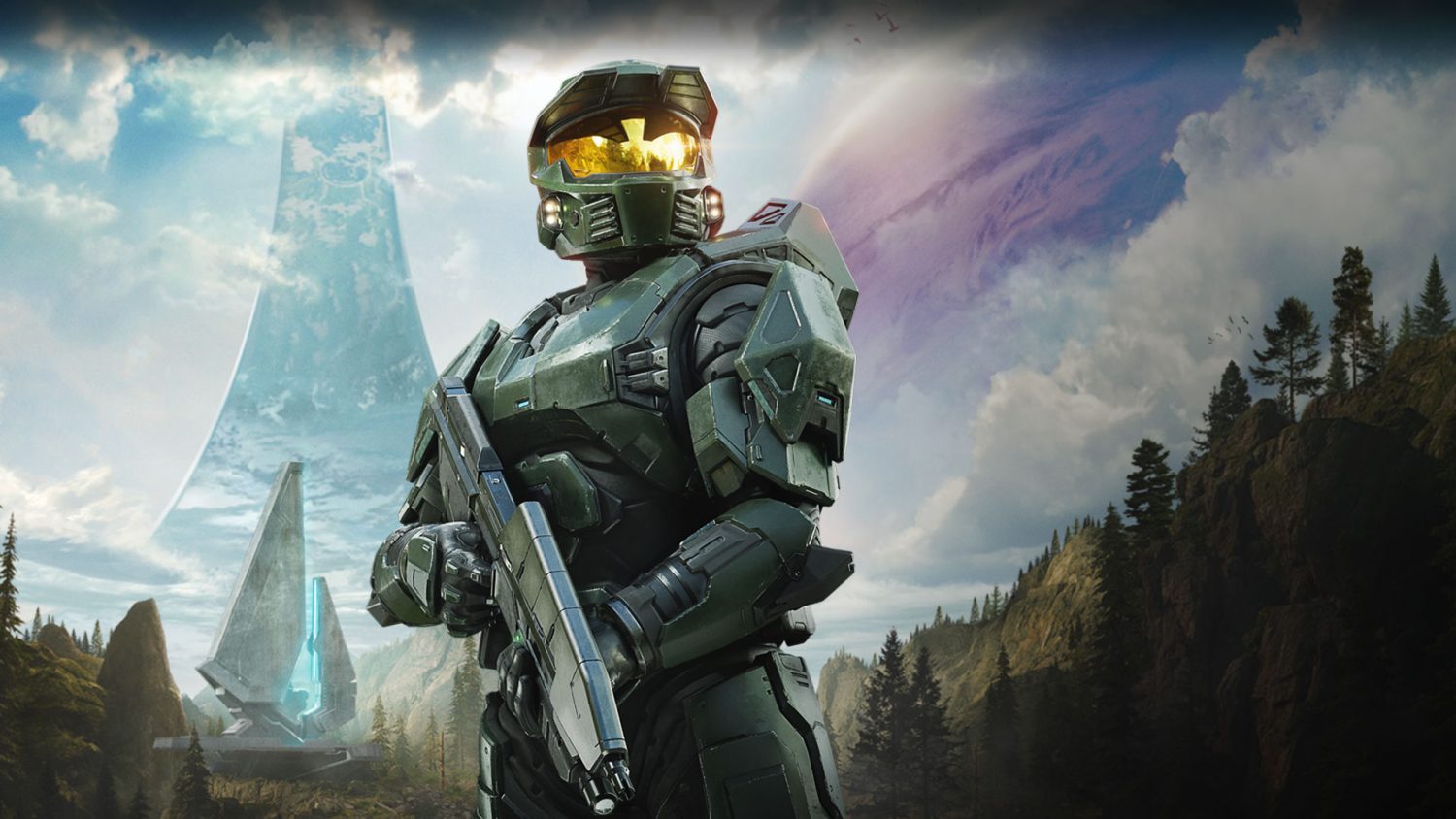Halo is more than a video game franchise. It is an era. It is a cultural timestamp for millions of players who grew up sitting in dark living rooms, staring at CRT televisions while energy swords, Warthogs, Needlers, and rocket launcher battles shaped friendships and rivalries.
It is the series that launched Xbox into the world, created modern console multiplayer, and changed how first person shooters were built. It turned LAN parties into a lifestyle, carried esports into a new generation, and inspired studios across the world to rethink what a sci fi shooter could be.
With more than two decades of releases, this series has delivered masterpieces, experiments, breakthroughs, missteps, expansions, and bold reinventions. Every single game brought something new to the table. Some changed the industry. Some changed the community. Some left fans divided. Some are still discussed today in every conversation about the greatest shooters of all time.
This ranking covers every major Halo title and essential spin off. The lens here is broad: gameplay quality, replay value, story impact, cultural weight, competitive influence, soundtrack strength, innovation, and the lasting footprint each entry left behind.
Halo: Official Respect My Region Ranking
12. Halo Spartan Assault
Halo Spartan Assault is the lightweight member of the franchise. A top down shooter created for mobile platforms and PC, it offered fast missions and arcade style encounters. It was polished for what it attempted, but the limitations of the format kept it from leaving any kind of lasting legacy.
The biggest challenge is identity. The game is built on atmosphere, scale, narrative progression, enemy variety, and the creativity of combat encounters. Spartan Assault removes most of these elements. Missions are short. The environments blend together. The weapon sandbox is simplified. There are no cinematic moments that echo through the Halo community. Everything feels small.
From a technical standpoint, the game works. The controls are responsive and the objectives offer just enough variety. But compared to the blockbuster experiences Halo is known for, Spartan Assault feels like a side quest. A snack between meals. A project built for convenience more than impact.
Spartan Assault does not damage the overall brand, but it does not elevate it either.
11. Halo Spartan Strike
Halo Spartan Strike improves on every idea introduced in Spartan Assault. The visuals are sharper. Missions are smoother. The pacing is better. The UI feels cleaner. It is the better game of the two without question.
But the ceiling remains the same. A top down mobile shooter can only climb so high in a ranking filled with genre defining first person shooters. Spartan Strike is fun in small bursts and absolutely worth a quick playthrough, but it is still forgettable when stacked next to the franchise’s giants.
There are no iconic levels, no emotional arcs, and no memorable boss encounters. Spartan Strike exists to expand the universe in a light way, not to shape it. Fans rarely debate it. No one references it in discussions about the future of Halo. It is well made, but not essential.
10. Halo Wars
Halo Wars was a bold experiment that paid off. Transitioning Halo into a real time strategy format felt like a wild gamble when the game was announced. RTS games traditionally belonged to PC gaming. Console controls were rarely strong enough to handle them. Ensemble Studios proved everyone wrong.
Halo Wars delivered smooth controls, crisp animations, beautiful cutscenes, memorable cinematics, and a story that expanded the early days of the UNSC in meaningful ways. Characters like Professor Anders and Sergeant Forge added new pieces to the narrative puzzle.
The issue is longevity. Halo Wars is respected but not revisited at the same rate as mainline titles. The competitive scene never grew into something massive. The modding community did not take off in the same way other RTS games did. Halo Wars was impressive in the moment, but its influence was limited by genre.
Still, Halo Wars deserves appreciation for proving Halo could live outside first person shooters without losing its soul.
9. Halo 5 Guardians
Halo 5 Guardians is one of the most complicated entries in the franchise. On a mechanical level, Halo 5 delivered elite gameplay. It featured some of the best movement in the series. Weapons felt crisp. The aiming model was refined. Competitive play thrived in the early months. The pro scene praised the skill ceiling. The game handled like a dream in ranked.
Unfortunately, everything around the gameplay held Halo 5 back.
The campaign left players frustrated. The decision to market the story as a showdown between Master Chief and Spartan Locke only for the actual narrative to unfold in a completely different direction disappointed many fans. The structure of the missions lacked the emotional weight earlier games carried. The writing felt detached from what players expected.
The removal of split screen became one of the most damaging decisions in Halo history. Halo is a couch game. A party game. A bring the homies and run campaign together game. Taking that away alienated a generation of fans who grew up playing Halo with friends on the same screen.
Halo 5 is a great shooter trapped inside a collection of decisions that made it difficult to love.
8. Halo Wars 2
Halo Wars 2 built on the strengths of the first game and delivered a deeper, more compelling RTS experience. The story is where it truly shines. The introduction of The Banished became one of the most important additions to modern Halo lore. Atriox turned into a fan favorite villain with real depth and charisma.
The cinematics remain some of the best ever produced within the Halo universe. The gameplay structure is more varied and more strategic than the original Halo Wars. The multiplayer modes offered replay value for dedicated fans.
Halo Wars 2 has the unfortunate challenge of being excellent inside a genre that will always sit below the mainline shooters when ranking the full franchise. Still, it earns respect for pushing the Halo universe into new territory and delivering one of the best antagonist factions the series ever produced.
7. Halo 4
Halo 4 had the nearly impossible task of following Bungie’s era and proving that 343 Industries could carry the torch. The studio answered that challenge with one of the most visually impressive games ever released on the Xbox 360. Halo 4’s graphics pushed the console to its absolute limit.
The campaign focused heavily on the evolving relationship between Master Chief and Cortana, diving into emotional territory the franchise had never fully explored. The introduction of the Didact and the deeper exploration of Forerunner history reshaped the lore.
Gameplay felt tight and satisfying, but the multiplayer progression system borrowed too heavily from other shooters of that generation. Some players felt the identity of Halo was drifting into unfamiliar territory.
Halo 4 remains a strong, emotional, and important entry, but it divides fans just enough to land in the middle of the ranking.
6. Halo 3 ODST
Halo 3 ODST stands alone as the most atmospheric Halo game ever created. The choice to remove the Spartan armor and drop players into the role of an ODST created tension and vulnerability that no other Halo campaign replicated. Exploring New Mombasa at night, guided by a moody jazz influenced soundtrack, turned ODST into a noir style masterclass.
Firefight, the survival mode introduced in ODST, became one of the most beloved co op experiences in the franchise. The cast of characters brought humor and heart. The story built a bridge between Halo 2 and Halo 3 in a way that expanded the entire universe.
ODST earns its high ranking because it delivered something unique, bold, and timeless. It proved Halo could break formula without losing identity.
5. Halo Infinite
Halo Infinite delivered a return to form for Halo gameplay. The gunplay feels authentic. The sound design brings back the powerful punch of classic weapons. Movement feels fluid. The grapple shot became a franchise defining tool, creating vertical combat, faster escapes, creative flanks, and dynamic encounters.
The semi open world campaign struck a smart balance between structure and freedom. It captured the mystery and loneliness of the Banished controlled Zeta Halo while delivering large scale battles that felt fresh.
The biggest weakness was the live service rollout. Missing playlists, slow updates, and a lack of consistent content created frustration inside the community. Over the years, Infinite has grown into a significantly better and more complete experience, but the early momentum was damaged.
Halo Infinite sits high because the core gameplay is excellent and because the improvements over time rebuilt trust within a large portion of the fanbase.
4. Halo Reach
Halo Reach blended emotion, tragedy, world building, and creative multiplayer design into a standout entry. The members of Noble Team each had their own personality and presence, making their sacrifices feel real and heavy. The fall of Reach remains one of the strongest stories in any sci fi shooter.
Multiplayer was loaded with modes. Custom games thrived. Forge mode became more powerful than ever. Reach delivered a complete experience that kept players active for years.
Some fans debated armor abilities and pacing changes, but even with those discussions, Halo Reach remains one of the most respected and replayed entries in the franchise.
3. Halo Combat Evolved
Halo Combat Evolved changed the gaming world forever. It launched the Xbox. It redefined first person shooters on consoles. It introduced a new sci fi universe, a new style of weapon sandbox, and a new philosophy of open style combat encounters. Vehicles became essential to the flow of the game. The Flood introduced survival horror elements that surprised players during the original release.
Halo Combat Evolved also birthed multiplayer culture through LAN parties. Blood Gulch became a generational map. Energy swords, rockets, snipes, and warthog runs turned into moments players still talk about today.
In any ranking that includes cultural weight, historical impact, and pure quality, Halo Combat Evolved stands tall. The only reason it is number three is because the next two games expanded the formula even further.
2. Halo 2
Halo 2 shaped modern gaming. It defined Xbox Live. It introduced online multiplayer that felt social, competitive, and unforgettable. It created early esports culture. Clan battles, voice chat, and competitive playlists all became household concepts because of Halo 2.
The campaign expanded the universe through the Arbiter, adding political and religious layers to the Covenant storyline. The soundtrack elevated the action. The maps became legendary. Lockout, Zanzibar, Sanctuary, and Midship still get referenced in competitive conversations today.
Halo 2 is not just a game. It is a landmark moment in the history of online multiplayer. Its influence can be seen across every modern shooter.
1. Halo 3
Halo 3 is the champion. The complete package. The perfect blend of story, gameplay, soundtrack, community features, multiplayer depth, and cultural impact. It was not just a sequel. It was the moment Halo reached its peak power.
The campaign delivered closure to the original trilogy with emotion, scale, and unforgettable encounters. The multiplayer ecosystem was unmatched. Custom games became an entire subculture. Forge mode changed what console players could create. Theater mode allowed players to capture and share their best moments long before streaming became a standard industry feature.
Halo 3 was more than a game. It was a global community playground that shaped friendships, competitive rivalries, and late night sessions for years.
Halo is one of the few franchises that truly shaped gaming around it. Each release captured a different moment in the evolution of shooters, storytelling, multiplayer culture, and console innovation. Looking back at every Halo game shows how much the series has changed and how much it still influences the design of modern science fiction shooters.
LAN parties and Xbox Live lobbies to esports tournaments and massive community driven sandboxes, Halo built an ecosystem that shaped the way people play games today. Even with its highs and lows, the franchise continues to generate conversation, debate, nostalgia, and anticipation every time a new title or update hits the timeline.
Ranking these games highlights the strength of the Halo brand and the legacy it carries across generations of players. Every entry adds a new layer of history, from the groundbreaking foundation of Combat Evolved to the emotional storytelling of Reach and the community driven creativity of Halo 3. This franchise has delivered unforgettable moments for more than twenty years, and its impact still resonates across gaming, entertainment, and esports.
No matter what direction the next chapter takes, Halo remains a cultural pillar with fans who will always show up, power on, and drop back into the fight.







